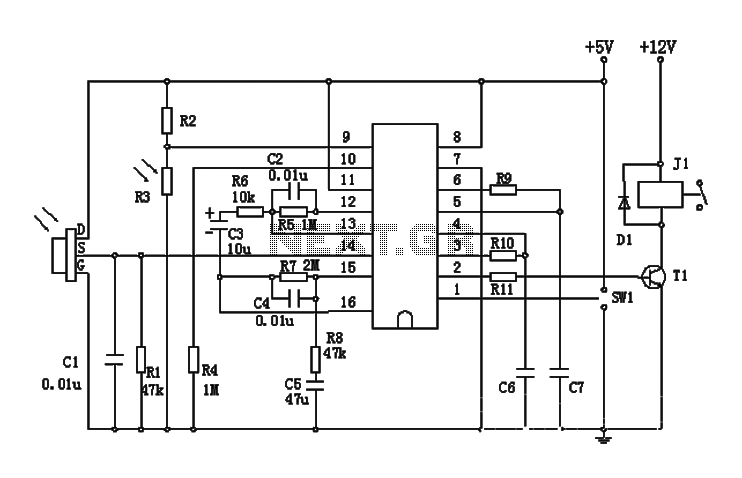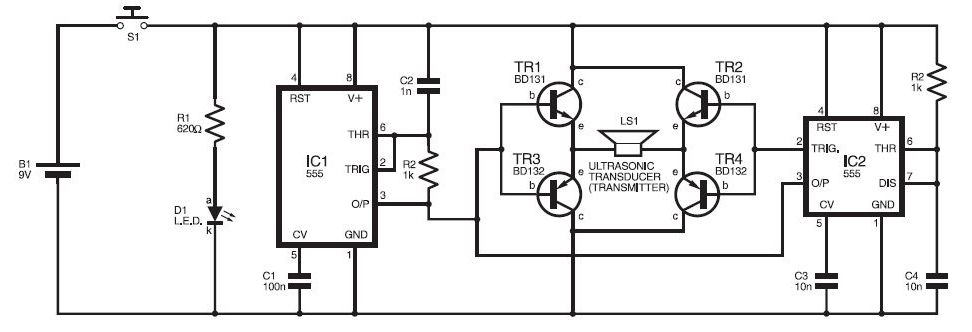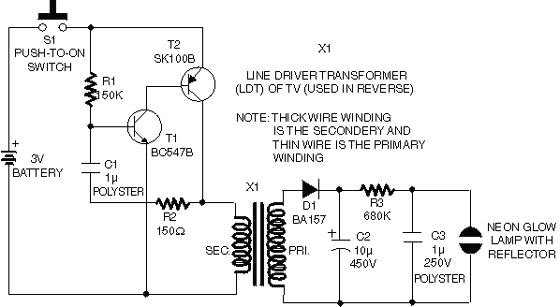
A circuit of a pyroelectric infrared switch application BISS0001

The BISS0001 is a high-performance integrated circuit designed for sensor signal processing. When combined with pyroelectric infrared sensors and a minimal number of external components, it forms a passive pyroelectric infrared switch. This device can automatically and quickly activate various types of loads, including incandescent and fluorescent lights, buzzers, automatic doors, electric fans, dryers, and automatic sinks. It is particularly suitable for use in enterprises, hotels, shopping malls, warehouses, and residential areas such as aisles and corridors, as well as for automatic lighting and alarm systems in security zones. The output signal from the operational amplifier OP1, which serves as the first-stage amplifier for the pyroelectric infrared sensor, is coupled through capacitor C3 to the operational amplifier OP2 for the second-stage amplification. The processed signal is then passed through a dual amplitude voltage comparator, COP1 and COP2, to generate an effective detection trigger signal (Vs) that starts a delay timer. The amplified output signal (Vo) is activated by transistor T1 to drive a relay load. Additionally, photosensitive resistor R3 detects environmental illumination; when used for lighting control, increased brightness reduces the resistance of R3, holding input pin 9 low and blocking the trigger signal Vs. The work mode selection switch SW1 allows for re-triggering when connected to one terminal, while connecting it to the other terminal sets the chip to non-repeatable trigger mode. Resistor R6 adjusts the gain of the amplifier, with the original design suggesting a 10K value, though a 3K resistor can be used to enhance circuit performance. The output delay time (Tx) is determined by external components R9 and C7, while the external blocking time (Ti) is set by R10 and C6. Standard values for R9 and R10 are 470 ohms, and C6 and C7 can be selected as 0.1 µF.
The BISS0001 circuit operates by utilizing the pyroelectric infrared sensor to detect motion or heat changes in its environment. This is achieved through a two-stage amplification process where the signals from the sensor are first amplified by OP1, then further processed by OP2. The dual comparators, COP1 and COP2, ensure that only significant changes in the detected signal are passed through as trigger signals, effectively filtering out noise and irrelevant fluctuations.
The use of a photosensitive resistor (R3) adds an additional layer of functionality, allowing the system to adapt based on ambient light conditions. This feature is particularly useful for automatic lighting applications, as it prevents the system from activating in well-lit conditions, thereby conserving energy and reducing unnecessary wear on the connected devices.
The gain of the operational amplifiers can be fine-tuned using resistor R6, allowing for flexibility in circuit design based on specific application requirements. The choice of resistor values and capacitor sizes for the timing components (R9, R10, C6, and C7) directly influences the response time and delay characteristics of the system, enabling customization for different operational scenarios.
Overall, the BISS0001 integrated circuit provides a versatile solution for automatic control applications, combining sensor technology with intelligent signal processing to enhance user convenience and energy efficiency in various environments.BISS0001 is a sensor signal processing with higher performance integrated circuits, which together with the pyroelectric infrared sensors and a small amount of external components constitute passive pyroelectric infrared switch. It can automatically and quickly open various types of incandescent, fluorescent, buzzer, automatic doors, electric fans, dryers and automatic sinks and other devices, especially for enterprises, hotels, shopping malls, warehouses and family aisles, corridors and other sensitive area, or automatic lighting, lighting and alarm systems for the security zone.
The BISS0001 circuit operates by utilizing the pyroelectric infrared sensor to detect motion or heat changes in its environment. This is achieved through a two-stage amplification process where the signals from the sensor are first amplified by OP1, then further processed by OP2. The dual comparators, COP1 and COP2, ensure that only significant changes in the detected signal are passed through as trigger signals, effectively filtering out noise and irrelevant fluctuations.
The use of a photosensitive resistor (R3) adds an additional layer of functionality, allowing the system to adapt based on ambient light conditions. This feature is particularly useful for automatic lighting applications, as it prevents the system from activating in well-lit conditions, thereby conserving energy and reducing unnecessary wear on the connected devices.
The gain of the operational amplifiers can be fine-tuned using resistor R6, allowing for flexibility in circuit design based on specific application requirements. The choice of resistor values and capacitor sizes for the timing components (R9, R10, C6, and C7) directly influences the response time and delay characteristics of the system, enabling customization for different operational scenarios.
Overall, the BISS0001 integrated circuit provides a versatile solution for automatic control applications, combining sensor technology with intelligent signal processing to enhance user convenience and energy efficiency in various environments.BISS0001 is a sensor signal processing with higher performance integrated circuits, which together with the pyroelectric infrared sensors and a small amount of external components constitute passive pyroelectric infrared switch. It can automatically and quickly open various types of incandescent, fluorescent, buzzer, automatic doors, electric fans, dryers and automatic sinks and other devices, especially for enterprises, hotels, shopping malls, warehouses and family aisles, corridors and other sensitive area, or automatic lighting, lighting and alarm systems for the security zone.
The figure above, the output signal of the operational amplifier OP1 pyroelectric infrared sensor as the first stage amplifier, and then by the C3 coupled to the operational amplifier OP2 for the second stage amplifier, and then through the two-way amplitude voltage comparator COP1 and COP2 after the treatment, the effective detection trigger signal Vs to start delay timer, the output signal Vo amplification by the transistor T1 is turned on to drive a relay load.
The figure above, R3 is photosensitive resistance, to detect environmental illumination. When used as lighting control, if the environment brighter, the resistance value of R3 will be reduced, so that the input pin 9 is held low, thereby blocking the trigger signal Vs. SW1 is a work mode selection switch SW1 when communicating with an end when the chip is re-trigger work; when SW1 in communication with the second end, the chip is at the non-repeatable trigger work.
FIG R6 can adjust the size of the gain of the amplifier, the original drawings selected 10K, actual use can 3K, can improve the gain of the circuit to improve circuit performance. Output delay time Tx by an external R9 and sizing C7 triggered by an external blocking time Ti R10 and C6 resizing, R9 / R10 470 ohms may be used, C6 / C7 can choose 0.1U.
FIG R6 can adjust the size of the gain of the amplifier, the original drawings selected 10K, actual use can 3K, can improve the gain of the circuit to improve circuit performance. Output delay time Tx by an external R9 and sizing C7 triggered by an external blocking time Ti R10 and C6 resizing, R9 / R10 470 ohms may be used, C6 / C7 can choose 0.1U.





